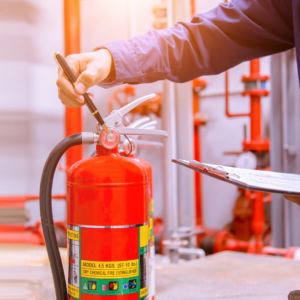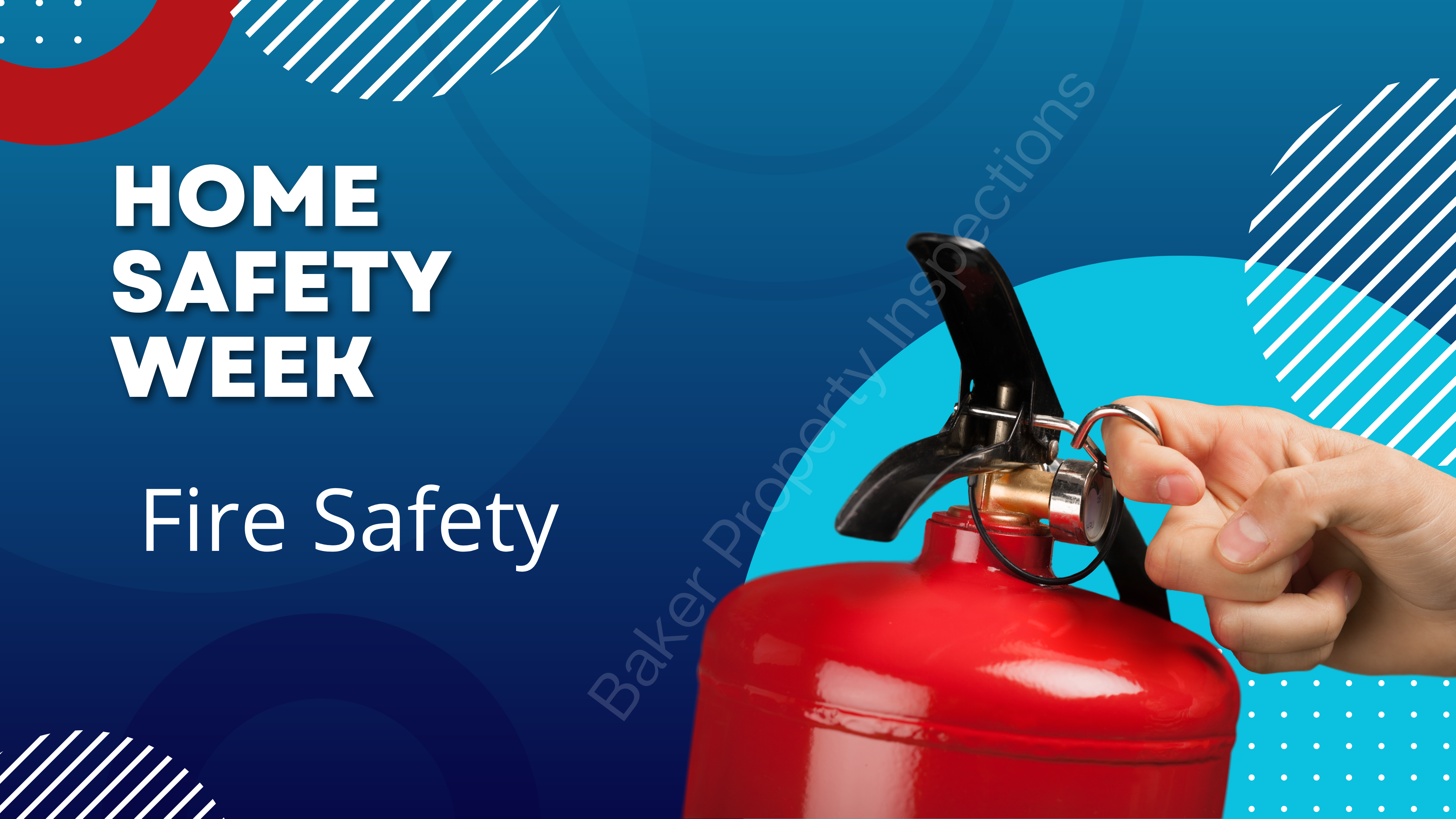Home Safety and Security: Protecting Your Family and Property
Part 1: Fire Safety
As a home inspector, nothing concerns me more than the long-term safety and well-being of my clients. That’s why I’ve dedicated myself to providing valuable insights and practical tips to help you protect your family and property. In this four-part blog series, we’ll explore various aspects of home safety and security. In Part 1, we’ll focus on understanding fire safety measures and precautions. Together, let’s delve into the world of fire safety and ensure you are taking every appropriate measure to protect yourself from fire.
Install Smoke Detectors: Your First Line of Defense
As a home inspector, I cannot stress enough the importance of having functioning smoke detectors in your home. These life-saving devices provide an early warning sign in the event of a fire. Install smoke detectors on every level of your home, inside bedrooms, and outside sleeping areas. Regularly test them, replace batteries annually, and consider interconnected detectors for optimal safety. You would not believe the number of homes that have NO detectors at all, and a great many are lacking detectors in important locations.
While not a fire hazard, you should address carbon monoxide detectors as well alongside fire safety. Carbon monoxide (CO) is a colorless and odorless gas that can be deadly if undetected. It is produced by faulty fuel-burning appliances, such as furnaces, water heaters, and fireplaces. Protect your family from this silent risk to your home safety by installing carbon monoxide detectors in your home. Place detectors on every level of your home, particularly near sleeping areas. Test them regularly, replace batteries annually, and ensure they are functioning correctly. A thorough home inspection of your fuel-burning appliances can help to ensure they are in good working order and not producing dangerous levels of carbon monoxide.
Plan and Practice Fire Escape Routes: Be Prepared for the Unexpected
Creating a fire escape plan is a crucial step in safeguarding your family. Take time to map out multiple escape routes from each room, including windows and doors. Consider purchasing a drop-down ladder for upper-story bedrooms. Involve every family member in the planning process and establish a designated meeting point outside. Practice your escape plan regularly to ensure everyone knows what to do, fostering a sense of confidence during emergencies.
Keep Fire Extinguishers Handy: Empowering You to Take Action
As your home inspector, I encourage you to keep fire extinguishers readily available in strategic locations. The swift action of a fire extinguisher can make a significant difference in containing a small fire. Familiarize yourself and your family with their usage and remember the PASS technique (Pull, Aim, Squeeze, Sweep). Make sure your extinguisher is not expired!
A large percentage of house fires start in the kitchen. Be sure you understand key cooking basics, such as never throwing water on a grease fire. In our home, we took the extra precaution of having a fire blanket that can be pulled out and placed over a fire on the stove. We have not actually tried this product (thankfully) but speed is key when it comes to putting out fires.
Practice Fire-Safe Habits: Prevention is Key
Preventing fires is just as important as being prepared for them. Adopting fire-safe habits is a proactive way to protect your home. Never leave cooking unattended, keep flammable materials away from heat sources, and exercise caution with candles and portable heaters. Store flammable liquids properly and maintain your chimney to prevent fire hazards. Chimney cleaning is recommended EVER YEAR.
Install Fire-Resistant Features: Strengthening Your Home’s Defenses
As your concerned home inspector, I encourage you to consider fire-resistant features when making improvements or in cases where your current structure needs attention. Incorporating fire-rated materials for doors, windows, and roofing enhances your home’s resilience. These features provide vital extra time in case of a fire, allowing for a safer escape and potentially minimizing damage. If I identify areas of concern, please be sure to have them addressed before your move.
One area of interest that many homeowners and even sometimes new home builders overlook is the garage. Many fires start in the garage, and the fire wall between the house and the garage is a vital safety feature that helps contain fires, protect the structural integrity of the house, and prevent the spread of smoke and toxic gases. Part of this defense system is a fire-rated door between the house and the garage with a self-closing device, such as self-closing hinges and springs. I learned the importance 0f this inexpensive device from a firefighter friend: when fires are discovered in the garage, it’s only human nature to alert others–and many times, that means forgetting to close that door, thereby giving the fire a direct route into the home.
Stay tuned for Part 2 of our Home Safety and Security series, where we’ll discuss essential tips for securing your home against burglaries. Your safety matters, and I’m here to guide you every step of the way.
The American Red Cross has in-depth, valuable resources about what you can do to further increase your home safety. Learn more here.

Disclaimer: The information provided in this blog post is for general guidance only and should not replace professional advice or assessment. For comprehensive fire safety guidance, consult with a fire safety professional or your local fire department. Always get a home inspection before you purchase a home. Qualified, experienced inspectors will point out fire safety concerns that you may not know about.
#friendlyexperiencedthorough #homeinspection #luxuryhomeinspections #newconstructioninspections
Serving Southwest Michigan including Kalamazoo, Stevensville, Battle Creek, Cassopolis, and more. Learn more at www.bakerpropertyinspections.com

